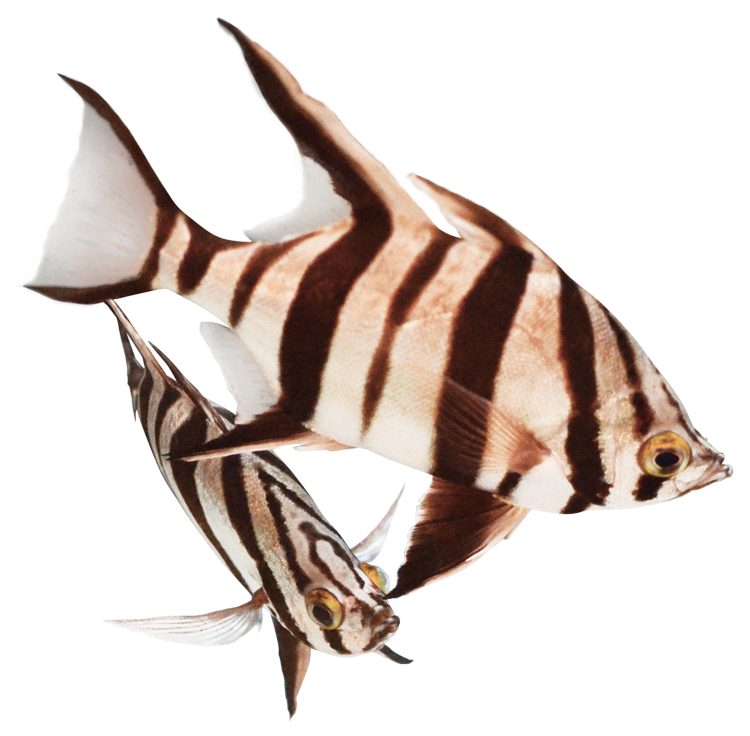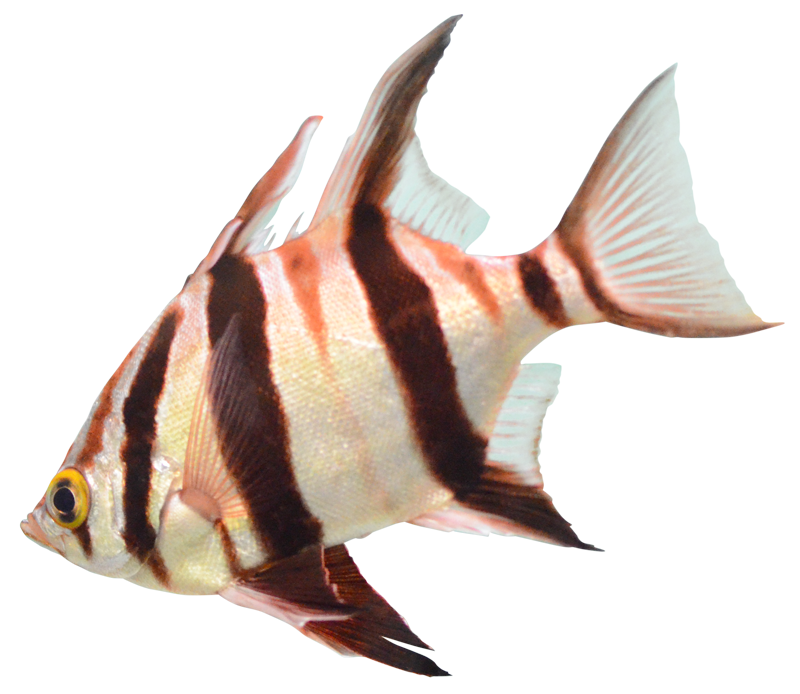
Enoplosus armatus (J. White, 1790)
5000万年前も歯ぎしりをしていた?
Did they still grind their teeth 50 million years ago?
全長25cm。オーストラリア南部沿岸のみに生息する固有種です。当初はチョウチョウウオ科に分類されていましたが、現在では本種のみでエノプロスス科を形成します。
銀と黒のゼブラ縞模様と長いヒレは淡水性エンゼルフィッシュにも似ていますが、こちらは海洋魚です。2つの目立つ背びれが特徴的で2番目の背びれは特に長く、鎌状です。背びれには棘がありますが、毒はありません。このように独特の形状を持ちますが、実は5000万年前から姿形が変わっていません。1836年、スイスの生物・地質学者ルイ・アガシーが発見した近縁種(Enoplosus pygopterus)の化石と、形態や模様が本種とかなり似ていることがわかったからです。
さて、オールドワイフ(老婆)と言う名前の由来ですが、捕まった後に歯ぎしりして発する音に言及して、軽蔑的な名前が付けられてしまいました。ちなみに種小名は背鰭の棘を指すラテン語のarmatus(=鋭い棘で武装)に由来しています。
This 25cm long species is endemic to the southern coast of Australia. Originally classified as a butterflyfish, it now forms the sole family of the Enoplosidae.
Its silver-and-black zebra stripes and long fins give it a resemblance to a freshwater angelfish, but it’s a marine fish. Its distinctive features include two prominent dorsal fins, the second of which is particularly long and sickle-shaped. The dorsal fin has spines, but is not venomous. Despite its unique shape, this species has actually remained unchanged for 50 million years. This is due to the fact that the fossils of a closely related species (Enoplosus pygopterus) discovered by Swiss biologist Louis Agassiz in 1836 were found to be quite similar in shape and pattern to this species.
The name “old wife” originated as a derogatory reference to the sound they make by grinding their teeth after being caught. The species name comes from the Latin armatus (= armed with sharp spines), which refers to the spines on the dorsal fin.

参考文献
東京ズーネット | どうぶつ図鑑 | オールドワイフ 2025年1月19日閲覧
かぎけんWEB | オールドワイフ 2025年1月19日閲覧
McGrouther, Mark (2021, April 7) “Old Wife, Enoplosus armatus (White, 1790)” Australian Museum. 2025年1月19日閲覧
Animalia | Fish | Old wife 2025年1月19日閲覧
“Old Wife, Enoplosus armatus (White 1790)” Fishes of Australia, Museums Victoria. 2025年1月19日閲覧